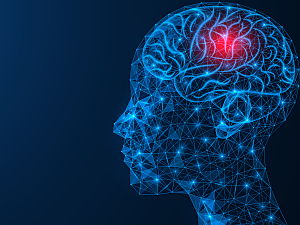Migraine and related headache disorders activate peripheral sensory neurons in the trigeminal ganglion (TG). Researchers at Brigham and Women’s Hospital have now mapped the TG cell types in both humans and mice and the genes they express and made it publicly available online. The searchable TG cell atlas will be a crucial resource for designing better pain therapies by selectively targeting specific genes and cells. William Renthal, MD, PhD, director of research for the John R. Graham Headache Center in the Department of Neurology, Lite Yang, BS, a former research assistant in Dr. Renthal’s lab, Shamsuddin Bhuiyan, PhD, research fellow in Neurology, Jia Li, PhD, research fellow in Neurology, and colleagues describe the atlas in Neuron.
Conservation in Cell Type and Gene Expression
At single-cell resolution, the researchers transcriptionally and epigenomically profiled TGs from 14 mice and three human donors without a diagnosis of migraine. In both species, they observed 15 distinct TG cell types:
- Eight neuronal subtypes (consistent with those previously identified in mice)
- Seven non-neuronal subtypes: satellite glia, myelinating and non-myelinating Schwann cells, DCN+ and MGP+ meningeal fibroblasts, leukocytes, and vascular endothelial cells
For each TG cell type, gene expression patterns were largely conserved between mice and humans, including most cell type–specific marker genes. Mice and humans were also similar with regard to the expression of ion channels that are critical for pain processing.
Except for proprioceptors, the same general classes of cell types were present in both the TG and dorsal root ganglion. The discovery of additional genes might lead to ganglion-specific therapies.
Differences in Gene Expression
Despite the broad similarities between mice and humans, some notable differences in gene expression were noted that have implications for pain processing.
A prominent example is Calca, the gene that encodes calcitonin gene-related peptide (CGRP), the target of new classes of FDA-approved migraine medications. In mouse TG, Calca was predominantly expressed in PEP nociceptors and NF1 neurons, whereas in human TG, it was also expressed in SST neurons.
SST neurons may thus have an important role in migraine pathophysiology through downstream actions of CGRP. This finding also highlights the importance of studying human cells, not just rodents or rodent cells, when developing novel therapies.
Animal Models
Satellite glia and fibroblasts were transcriptionally activated in two mouse models of migraine, the team observed. Additionally, vascular cells were activated in one of the models, along with certain nociceptors. These findings suggest it will be important to look beyond neurons for therapeutic targets in migraine.
Future Directions
To identify more specific targets for migraine therapies, future studies are still needed to clarify how certain genetic variants increase migraine susceptibility. The wealth of data in the new atlas should speed this process by guiding research toward the cell types in which each variant is most likely to cause dysfunction.
The atlas will also aid the study of facial pain, other types of headache, and other TG functions, including sensory innervation of cornea, nasal mucosa, and teeth. The research team is already working to improve the cellular and molecular resolution of the atlas by sequencing additional human TGs.
